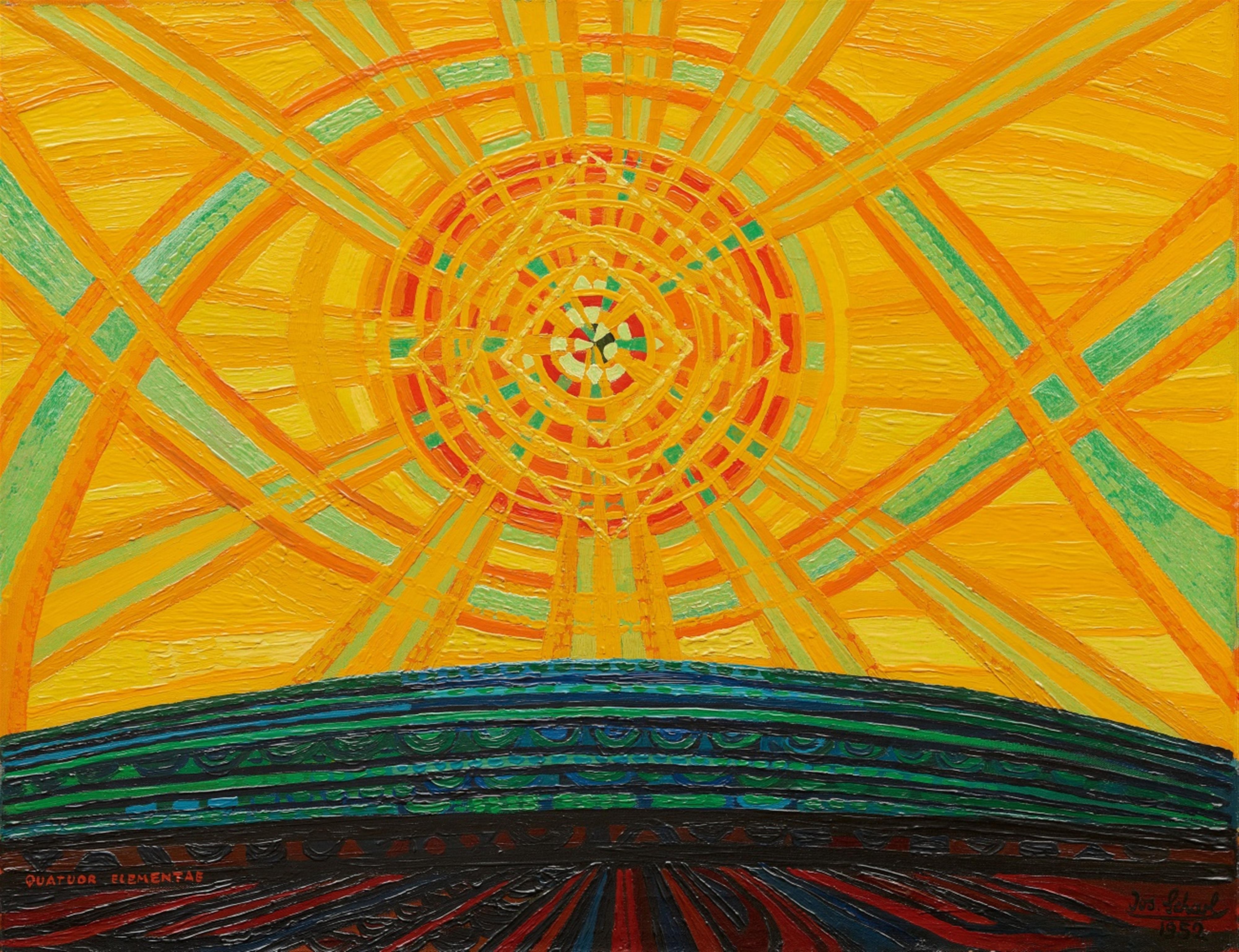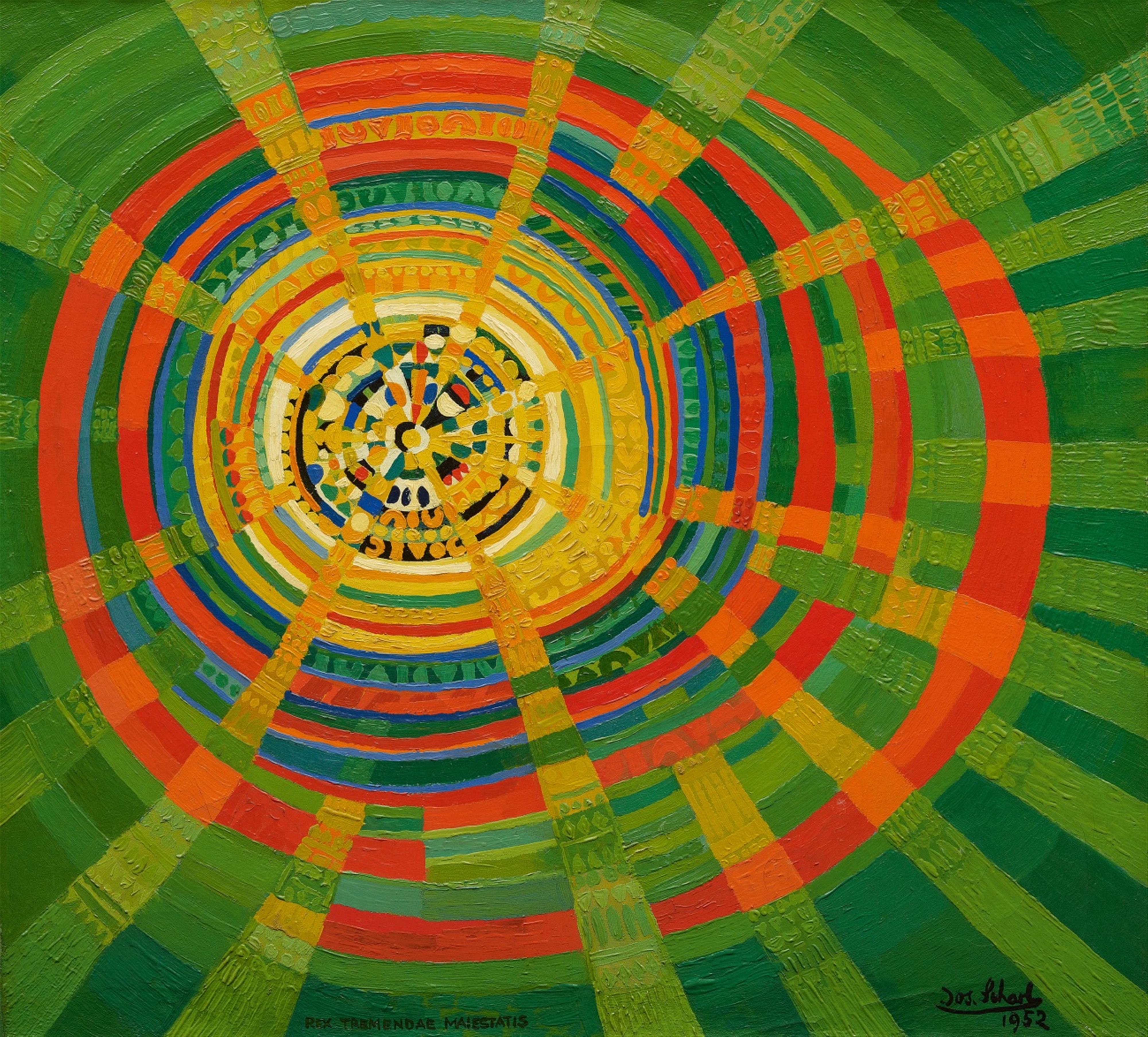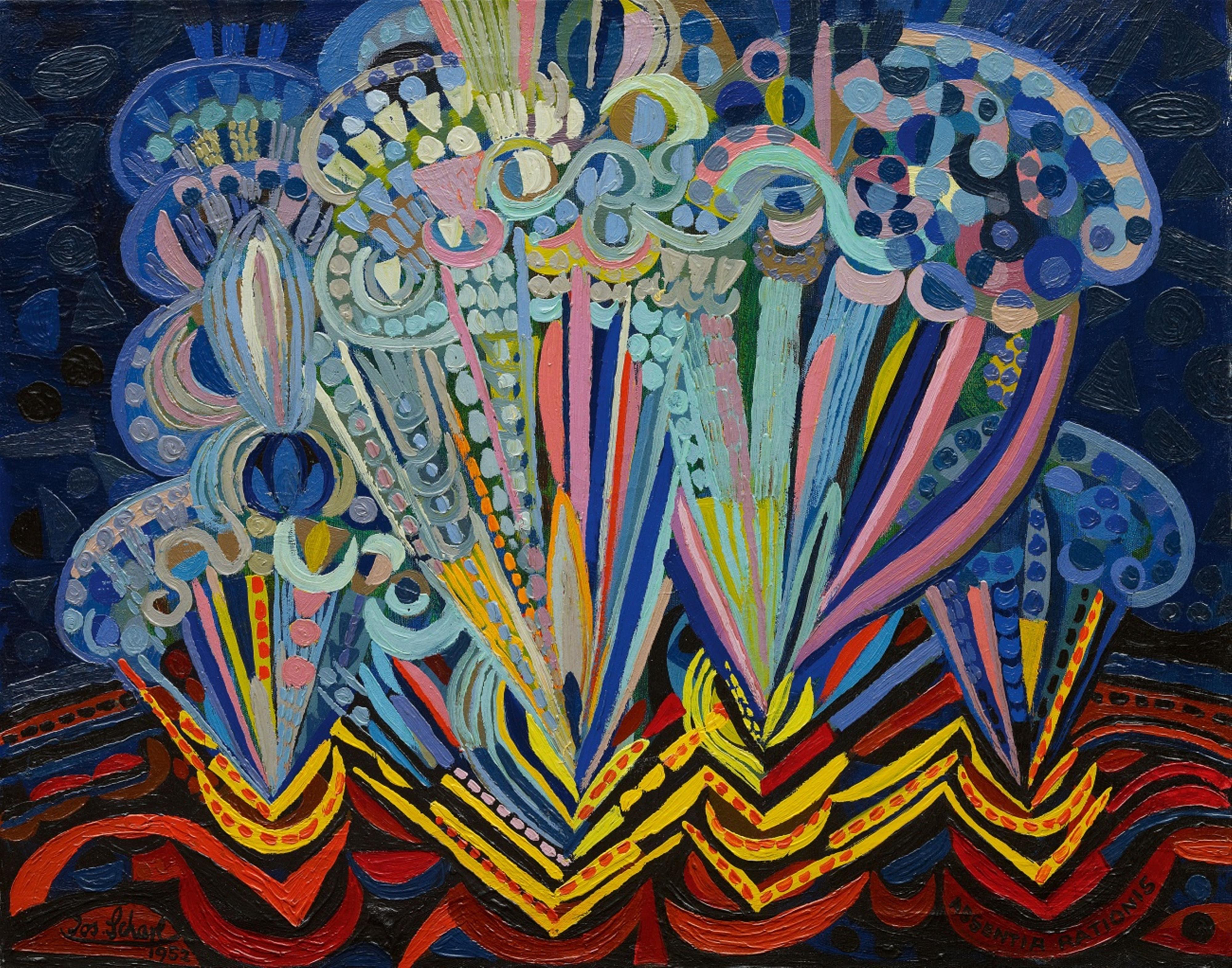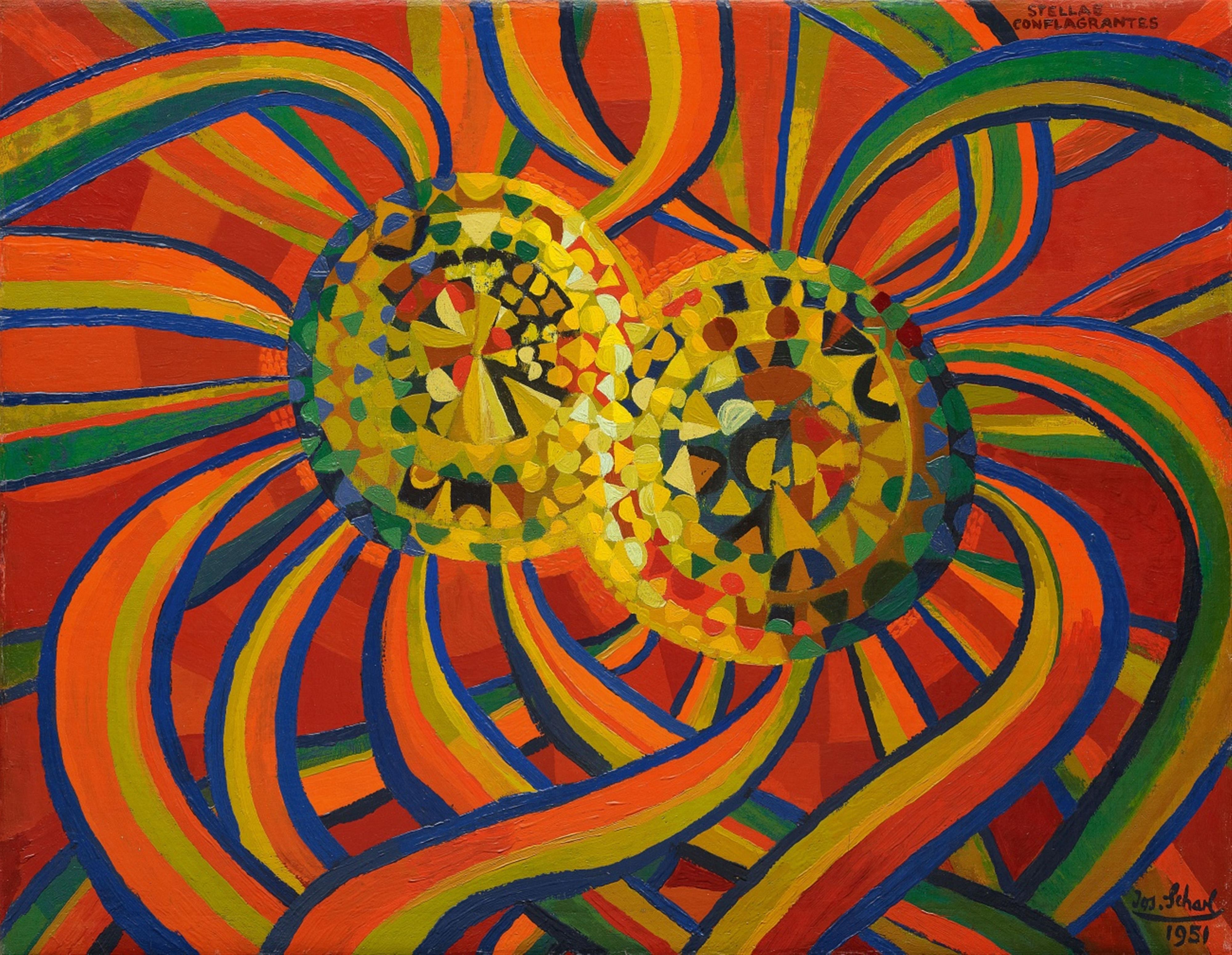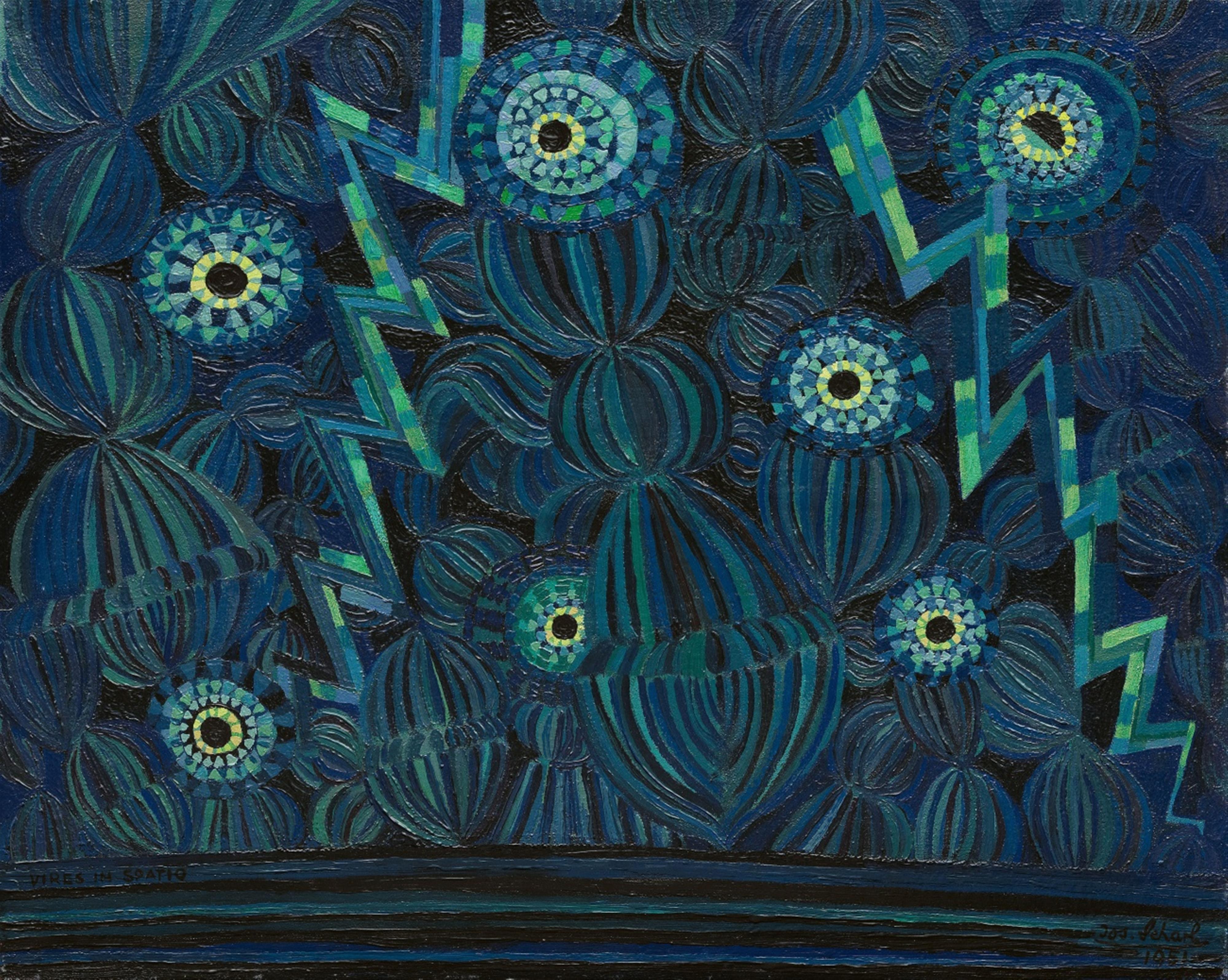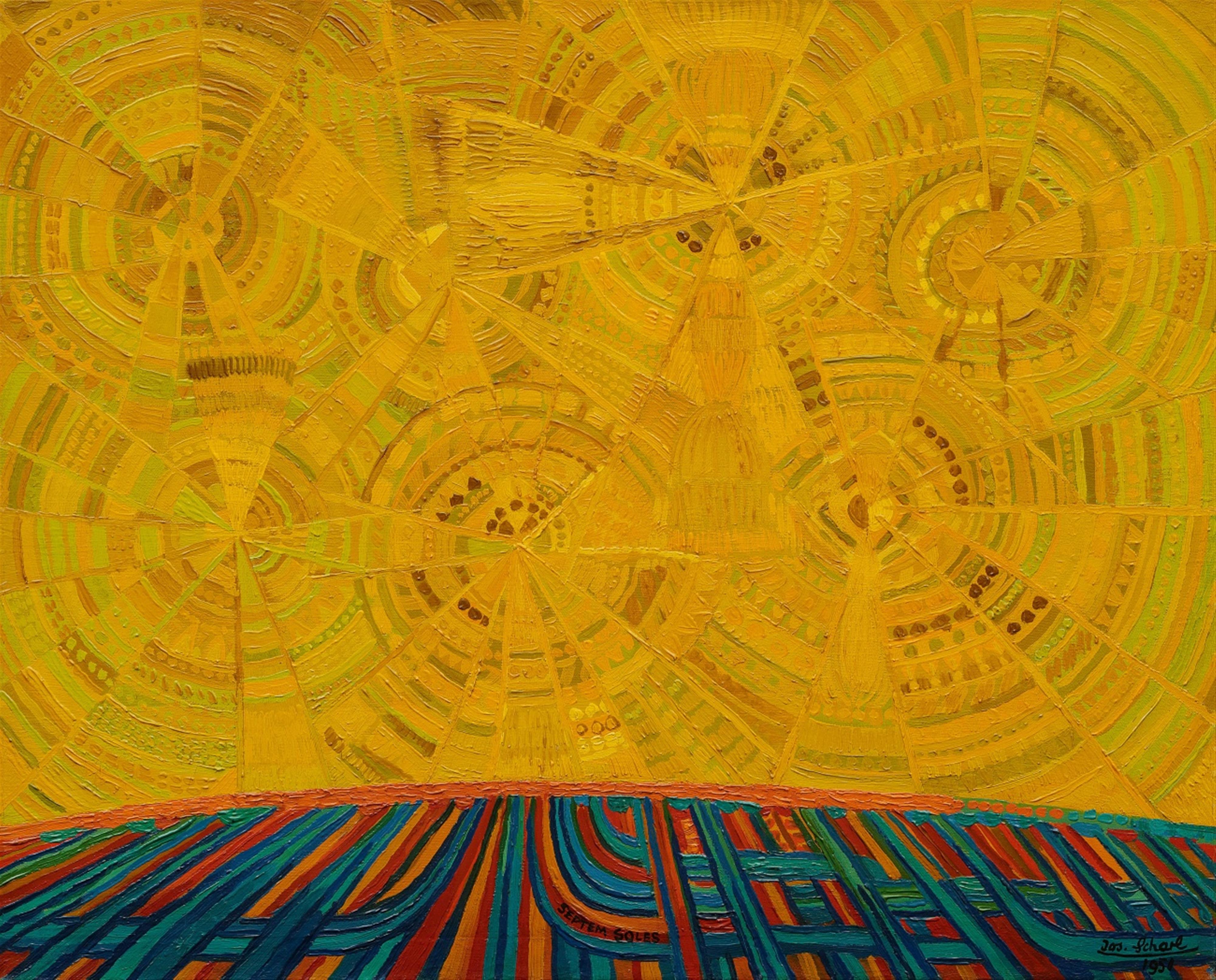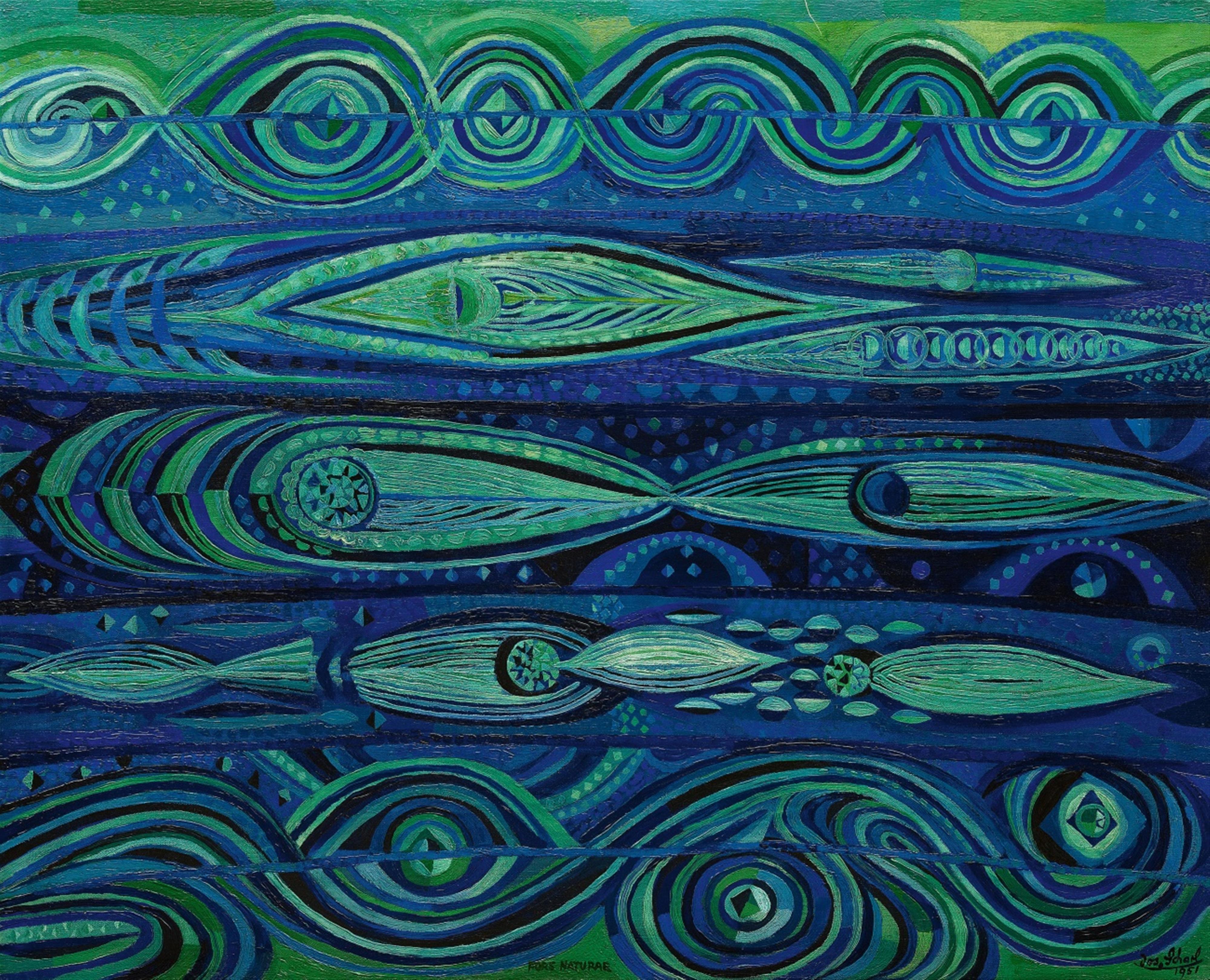Josef Scharl
Der Requiem-Zyklus
1951/1952
Oil on canvas (in 7 parts) 62/85 cm x 79/105 cm Individually framed. Each canvas signed 'Jos. Scharl' in brush and dated '1951' or '1952' accordingly and each titled 'REX TREMENDAE MAIESTATIS', 'FORS NATURAE', 'SEPTEM SOLES', 'VIRES IN SPATIO', 'QUATTUOR ELEMENTAE', 'STELLAE CONFLAGRANTES' and 'ABSENTIA RATONIS'. - Partially with fine craqueleur and isolated retouches towards the canvas margins (2 and 6). One canvas relined (6).
Strongly influenced by Vincent van Gogh, Paul Cézanne and finally Pablo Picasso, Josef Scharl's work is distinguished above all by his boldly colourful occupation with the landscape, still life and - not least - portrait. It was not until late in his life that an intellectual distance entered into his oeuvre. In works defined formally by a partly ornamental two-dimensionality, he began to more frequently leave the representational realm and concern himself with philosophical and transcendental content. Scharl was interested in the forces of nature as well as the writings of Spinoza and those of his close friend Albert Einstein. He devoted his attention to Biblical subjects or - as in the present series - Mozart's Requiem (see exh. cat., Josef Scharl, Zum Siebzigsten Geburtstag: Ölbilder und Temperablätter, Galerie Nierendorf Berlin 1967, p. 9).
In spite of his worsening illness, the period around 1950 may represent the most intense phase in the artist's work: “Otherwise I seek consolation and refuge in my work and that beauty and goodness which can still be found in this confused world: a good book, good music and a small handful of good people”, wrote Scharl in April of 1950 to his friend Otto Schmidt (cited in: Andrea Lukas, Josef Scharl (1896-1954): Eine Biographie, in: Andrea Firmenich (ed.), Josef Scharl: Monographie und Werkverzeichnis, Cologne 1999, p. 27). Scharl's painterly exploration of Mozart's final, myth-shrouded composition is presumably also to be understood in the context of the painter's own state of health: with his Requiem-Zyklus, Scharl was able to transform this music into a resonantly chromatic realm.
Catalogue Raisonné
Lukas 546, 519, 520, 521, 547, 522, 548
Provenance
Aloys Greither Collection, Munich; Galerie Günther Franke, Munich; Private possession; Christie's, London, Impressionist and Modern Day Sale 7600, 25 Jun. 2008, lot 423, Private collection, Czechia
Literature
Aloys Greither, Josef Scharl. Requiem-Zyklus, Munich 1971
Exhibitions
New York 1959 (The Gallery St. Etienne), Josef Scharl. Last Paintings and Drawings; Munich 1971 (Galerie Günther Franke), Josef Scharl cat. no. 47; Munich 1982/83 (Städtische Galerie im Lenbachhaus), Josef Scharl. 1896-1954, cat. no. 46

